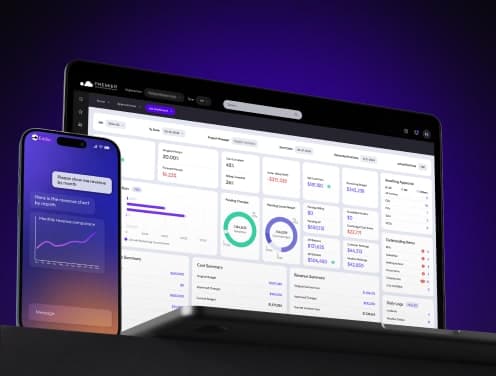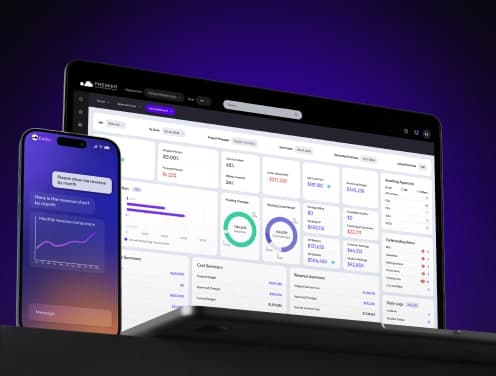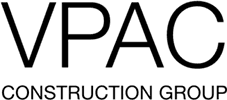
How to Master Financial Risk Management in Construction Industry
The construction industry ranks among the riskiest for business failures. Project managers and financial officers in construction companies know this reality all too well. Your project outcomes and future business success face constant threats from financial risks. That's why proper risk management isn't just helpful - it's essential.
Construction's unique challenges demand specialized financial risk management processes. These projects come with built-in risks like delays, disputes, and changing regulations. Large construction projects often face cost overruns, delays, staffing problems, equipment issues, and revenue shortfalls. But you can reduce these risks by implementing solid strategies that control costs without compromising quality standards.
Sound financial risk management is a vital part of project success and profit margins. This piece offers practical ways to spot, analyze, and reduce financial risks before they hurt your bottom line. On top of that, it shows how smart cash flow management helps limit your financial exposure. The right strategies will help your construction business direct through complexities and build lasting success.
What is financial risk management in construction?
Financial risk management in construction is a way to control your finances instead of letting them control you. Your company's resources can drain quickly from a single unexpected event without proper risk management. This process helps you spot, assess and tackle financial threats that could hurt your construction projects.
Financial risk management works like your safety net. Construction risk means any incident that could harm your project's success. Construction professionals use this method to spot and alleviate uncertainties that could damage their project's financial health.
Construction brings unique financial challenges unlike other industries. KPMG found that many global construction projects face major delays. Common financial risks in construction come from:
- Wrong cost estimates during planning and tendering
- Surprise expenses from changing material prices
- Extra work requirements
- Late payments from clients or financiers
Your construction firm can make smart decisions by carefully reviewing potential financial risks. This helps allocate resources well and put the right risk controls in place. Smart planning lets you manage project finances and fix cash flow problems early.
Construction financial risk management starts with spotting risks through detailed project review. Teams then assess how likely these risks are and what they mean. The next step creates specific plans to handle them. Companies can use insurance, contract protection, emergency funds, and backup plans to deal with possible problems.
Many construction firms bid too low to win projects, which often makes them operate at a loss. This makes financial risk management essential to stay profitable. Good financial risk strategies keep projects on budget and profitable by handling construction uncertainties.
Projects need constant monitoring. Financial risk management works best as an ongoing process. Risk plans should change as your project grows. This helps catch issues early so small problems don't become financial disasters.
The right construction software plays a key role in managing financial risk. Construction ERP systems help with budgeting, forecasting and improving supplier relationships. These tools show live project finances, which leads to better decisions throughout construction.
Financial risk management determines if projects succeed or fail. Strong financial planning, cost tracking, and contract management help protect profits. This builds lasting stability in an uncertain industry while protecting current projects.
Understanding the types of financial risks in construction
Financial risks in construction take many forms and create unique challenges for your projects. Budget issues and legal disputes can derail any project. You need to know these risks to manage them better. Here are the five biggest types of financial risks you'll face in construction projects.
1. Cost overruns and budget issues
Budget problems rank among the most common financial risks in construction. A KPMG study shows all but one of these projects came within 10% of budget in the past three years. Labor shortages and material costs caused first-quarter construction profit margins to drop by 27% in 2023.
These overruns happen because of:
- Inaccurate cost estimates during planning
- Design deficiencies (38% of construction disputes)
- Change orders after original models and budgets are completed
- Poor project administration and communication
- Inadequate subcontractor qualification
One global study shows cost overruns happen in 92% of projects. Projects typically go over budget by 20% to 50% across sectors. About 30% of construction companies regularly face overruns because profits fall short of expectations.
2. Delayed payments and cash flow gaps
Late payments threaten your project's financial health. Payment delays increased costs by $280 billion in the construction industry during 2024. Now 82% of contractors wait over 30 days for payment, up from 49% two years ago.
Contractors face cascading problems from these delays. Many must use personal savings or credit cards to keep their operations going. Companies that extend credit and need to borrow money often spiral into financial trouble.
Subcontractors feel these delays too. Every surveyed subcontractor looks at a general contractor's payment history before bidding on projects. Three in four subcontractors now raise their bids to protect against possible delays.
3. Contractual and legal disputes
Unclear terms or misunderstandings often lead to contractual disputes. Even the best contracts can create unexpected conflicts. Breach of contract tops the list of dispute causes when parties fail to meet their obligations.
Legal battles often start over payment issues, such as:
- Contractors not getting paid for finished work
- Owners refusing payment because of claimed defects or delays
- Disputed invoices due to scope changes
Construction delays, quality issues, and change orders cause many disputes. Projects involve multiple parties, complex contracts, and big investments, all increasing the chance of needing legal help.
4. Market and economic fluctuations
Interest rates, inflation, and market conditions can shake up your projects. Currency changes create major risks in international projects. Foreign lenders usually want payments in foreign currency instead of taking this risk.
Changes in interest rates pose their own risks. Long-term construction financing with variable rates depends on predictions that might not hold true. Economic downturns hurt project success through lower demand, delayed payments, or financing problems.
Material costs can wreck project budgets. Contract clauses about material cost changes offer some protection. Learning about different materials or suppliers helps keep costs steady when markets get volatile.
5. Safety and compliance penalties
Safety violations come with steep financial costs. Starting January 15, 2025, OSHA penalties can reach $16,550 for serious violations and $165,514 for willful or repeated violations.
The Bureau of Labor Statistics counts about 150,000 construction site injuries yearly. Each safety violation can trigger multiple OSHA citations, making penalties add up fast.
Beyond fines, safety problems cause project delays, work stoppages, higher insurance costs, and possible lawsuits. Injuries or deaths remain the worst outcome, bringing huge financial losses and damage to reputation.
Step 1: Identify financial risks early
Successful project management starts with identifying financial risks early. Your project's success or failure depends on catching potential problems at the start and developing strategies that save thousands of dollars later. Just as a doctor's early diagnosis can prevent serious illness, you can prevent major financial issues by spotting risks early.
Use historical data and project scope
Your financial crystal ball comes from historical data when planning new construction projects. Past information and trends will help you improve your risk assessment strategies and make better decisions. Your experiences become valuable predictive tools rather than just memories.
Two significant questions need answers:
- Why (or why not) us?
- Where have we seen this before?
The first question aligns with a SWOT analysis (Strengths, Weaknesses, Opportunities, Threats), while the second comes from "lessons learned" in similar projects. To cite an instance, losing a bid to a competitor's political lobbying becomes valuable information for future risk planning.
Construction predictive analytics plays a key role here. Construction firms can find patterns that signal high-risk scenarios by using historical data. Your company might assess delay risks on large infrastructure projects by analyzing previous project data and identifying critical risk factors.
A clear project scope definition should come before risk identification. This creates assessment boundaries and helps focus on relevant objectives. Your project's scope becomes its North Star and guides decisions for effective resource allocation. Unclear scope definitions can increase risk because ambiguity creates misunderstandings and disputes.
Project Management Information System (PMIS) solutions offer tools that assess and manage risks. These systems gather project data to help assess risks across your portfolio. A construction owner's risk management application analyzed data based on location, weather, contractor information, and labor conditions. This resulted in lower project risk and insurance costs.
Involve all stakeholders in risk discovery
Financial risk management needs collective input from various departments and project individuals. Team members, subject matter experts, and relevant stakeholders should all participate in this all-encompassing approach.
Each stakeholder's unique view adds value. Missing key stakeholders creates dangerous blind spots in your risk assessment. Problems become expensive when important voices don't participate in identifying risks.
All stakeholders must agree on risk perceptions for effective risk mitigation. Construction projects' fragmented nature with various stakeholders across different phases makes this challenging. A survey showed that design engineers, general contractors, and subcontractors didn't agree on site safety responsibilities.
You can involve stakeholders through:
- Interviews with key financial personnel
- Brainstorming sessions with cross-functional teams
- Surveys that gather diverse perspectives
- Workshops focused on risk identification
A project team interviewed their Chief Financial Officer to learn about financial risks in different scenarios: winning the bid, losing the bid, or choosing not to bid.
Stakeholders often reveal risks you might miss. Their expertise, concerns, and viewpoints highlight potential problems that weren't obvious before. Remember secondary stakeholders too, they often push back against decisions affecting them.
Your construction projects stay financially healthy when you combine historical data analysis with thorough stakeholder involvement. This creates a strong foundation for managing financial risks throughout your project.
Step 2: Analyze the impact and likelihood
Your next vital step after spotting financial risks is to review how badly these risks could affect your project and their likelihood. This review helps create practical strategies that protect your bottom line.
Build a risk matrix
A risk matrix works as a visual tool to categorize project risks based on their likelihood and potential effect. Think of it as your financial risk GPS. It shows which problems need quick action and which ones you can watch over time.
Here's how to build an effective risk matrix:
- List identified hazards: Compile all potential financial risks from your identification process
- Evaluate likelihood: Rate each risk's probability of occurring (typically on a 1-5 scale)
- Assess severity: Determine the financial effect if the risk materializes (also on a 1-5 scale)
- Plot on the matrix: Position each risk according to its combined scores
Most construction companies use colors to code their risks. Red shows high risks, yellow indicates moderate ones, and green represents low risks. This visual method helps project teams and stakeholders understand complex risk assessments quickly.
Estimate financial exposure
Quantitative analysis helps you understand your financial vulnerability better. This process puts numbers to both the probability and financial effect of each risk.
Material price changes offer a good example. Your analysis might show a 40% chance of steel prices rising by 15%, adding $75,000 to project costs. This exact figure helps plan the right contingency funds.
Business intelligence tools have simplified this process. Modern software turns project data into smart solutions that spot cost and budget risks early. Advanced platforms now use AI to flag high-risk issues that affect costs, schedules, quality, and safety.
Prioritize based on severity
After mapping risks on your matrix, tackle those in the high-risk category first. These usually have both high likelihood and major effect. The upper right part of your risk matrix needs immediate attention.
Here's a practical way to look at it: Risks scoring 4-5 in both likelihood and effect need immediate action plans and maybe extra resources. Moderate-scoring risks need monitoring, while lower-priority ones just need occasional checks.
Smart prioritization means some risks matter more than others. Construction managers with limited resources must focus on risks that truly threaten project finances. This smart use of resources makes the difference between effective risk management and just going through the motions.
Note that risk evaluation means comparing risk levels against what's acceptable. Each construction company has its own risk comfort level based on financial strength, project mix, and business strategy. Your team should decide if identified risks fit within acceptable ranges or need more protection measures.
A careful review of effect and likelihood builds strong groundwork to pick the right protection strategies for each priority risk.
Step 3: Choose the right mitigation strategy
Your risk landscape mapping is complete. Now it's time to act. The way you handle risk mitigation will determine if financial risks will destroy your project or become challenges you can handle.
Avoid, accept, transfer, or control
Each financial risk needs its own response strategy. Construction managers usually have four options:
- Avoid - Eliminate the risk by changing project plans or methods
- Accept - Know the risk exists but do nothing if the impact is small
- Transfer - Pass the risk to another party through insurance, bonds, or contracts
- Control - Put measures in place to reduce likelihood or impact while keeping the risk
Smart construction managers pair each risk with the right strategy. To name just one example, you might control material price changes through early purchasing, while specialized contractors might take on design risks.
Several factors affect your choice. Small risks with little financial impact often just need acceptance. This saves your resources for bigger threats. High-impact risks might justify avoidance tactics even at high cost.
Use insurance and bonding wisely
Insurance helps you transfer risk in construction. You should have commercial general liability, automobile liability, workers' compensation, and employers' liability insurance at minimum. These basic policies protect you against common business risks like third-party injuries and property damage.
Construction-specific policies give you extra protection:
- Builder's risk insurance covers damage to property under construction
- Professional liability insurance protects companies that provide design services
- Specialized policies handle project-specific issues like pollution insurance
Insurance certificates prove coverage exists. You need to collect them from every subcontractor. These documents spell out the essential terms, conditions, policy limits, and duration. All the same, you need systematic procedures to manage these certificates because they must be updated yearly for long projects.
Bonding is another key risk management tool that works differently from insurance. Bonds protect project owners rather than the policyholder. Most states require contractors to have licenses and bonds.
Three types of bonds serve different purposes:
- Bid bonds ensure you'll honor your bid and sign the contract if chosen
- Performance bonds protect project owners if you don't complete work properly
- Payment bonds make sure subcontractors and suppliers get paid
Note that you must pay back the surety company when they pay a bond claim. This key difference makes bonds more like financial guarantees than regular insurance.
Negotiate better contract terms
Well-negotiated contracts are great tools for risk management. They spread liabilities among all parties, general contractors, subcontractors, suppliers, architects, and owners.
Many construction contracts come from professionals who don't deal very well with insurance matters. This can push uninsurable liabilities to contractors. You must review all terms carefully before signing.
Payment provisions need extra attention. "Pay-if-paid" clauses mean subcontractors only get paid when owners pay, pushing the risk downstream. Try to negotiate "pay-when-paid" provisions instead. These require payment within a set time whatever the owner's payment status.
Other key contract points include:
- Change order procedures that cover both direct costs and schedule impacts
- Notice provisions with realistic timeframes (5-10 business days instead of impossible 48-hour requirements)
- Material price adjustment clauses that let you adjust budgets when material costs change too much
- Indemnification provisions that line up with your insurance coverage
You need several elements working together for effective risk transfer through contracts: contractual indemnity, additional insured status, and insurance certificates. These create multiple layers of protection if one fails.
Your construction contract ended up becoming either your strongest defense or your biggest weakness in financial risk management. You can build resilient infrastructure against financial risks in your construction projects through strategic contract negotiation, detailed insurance coverage, and proper bonding.
Step 4: Build a financial contingency plan
Construction projects can face financial surprises despite careful planning. A financial contingency plan works as your safety net when things don't go as planned. You need foresight and practical approaches to keep your project running smoothly through challenges that will come up.
Set aside emergency funds
Experienced contractors know the value of a financial buffer. Your construction project should set aside 5-10% of the total budget to handle contingencies. This isn't extra padding - it's a calculated financial tool that helps manage cost increases and covers estimate shortfalls.
Your contingency fund needs to cover these key areas:
- Construction contingency for cost growth during construction
- Design contingency based on design completion levels
- Management contingency for third-party and unexpected changes
Clear procedures to access contingency funds are essential. Document required notices, paperwork, and approval processes. Track how funds are used against specific risk elements to show that enough contingency remains to keep the project within budget. You should also decide what happens to unspent contingency - will funders get it back or will contractors share it as incentives?
Plan for payment delays
Payment delays have become a serious issue in construction. Today, 82% of contractors wait over 30 days for payment, up from 49% just two years ago. These delays cost the industry $280 billion in 2024 alone.
Contractors often tap into personal savings, credit cards, or retirement funds to keep operations going when cash flow stops. Your financial plan must account for big gaps between doing work and getting paid.
Digital solutions can help ease this challenge. Electronic payment systems make payments smoother and give you up-to-the-minute visibility into payment status across projects. These systems send automatic payment reminders at set times, which reduces the work needed to follow up with clients.
Include legal remedies like liens
A mechanics lien serves as your last defense against payment problems. This legal tool creates a security interest that protects workers who supply labor and materials from losing money. Contractors and subcontractors can place liens on their work until they receive payment.
Filing a lien shouldn't be your first move, but having this option in your contingency toolkit matters. Most states require contractors to be licensed and bonded, which protects everyone involved.
Good communication with clients and subcontractors remains crucial throughout your contingency planning. Clear invoices with proper documentation face fewer questions and processing delays. Your financial contingency plan should prepare you for common issues while protecting against worst-case scenarios.
Step 5: Monitor and adjust continuously
Risk management extends beyond your original planning and needs constant attention throughout the project lifecycle. Your team must review risks regularly to tackle challenges before they get out of hand. This process works like driving with your eyes on the road instead of just setting a GPS destination and hoping for the best.
Track KPIs and financial metrics
Your team needs to monitor key performance indicators for financial visibility into potential problems. These critical metrics matter most:
- Schedule Performance Index (SPI): Compares planned versus actual work completion to signal if you're falling behind schedule
- Cost Performance Index (CPI): Measures financial efficiency by comparing earned value against actual costs
- Defect rates: Shows quality issues that might lead to rework and extra expenses
- Budget variance: Tracks spending against approved budgets to spot overruns early
Quick updates and instant alerts about deviations help you spot and fix issues before they expand. Your team should compare actual versus planned performance weekly or monthly, and when conditions change, adjust your KPIs.
Update risk plans as the project evolves
Projects change and your risk plans must adapt with them. Risk management plans can't stay static in today's ever-changing construction environment. Regular updates help you find emerging risks while making assessment processes better.
Your risk plan updates should look at both internal factors (team dynamics, resource availability) and external factors (market trends, regulatory changes). This improvement cycle helps your team be proactive against financial threats.
Teams should review actions after any incident, near-miss, or project milestone to turn real experiences into useful lessons. These reviews make your mitigation strategies stronger for the next phase or jobsite.
Use software for real-time visibility
Modern construction financial software gives immediate insights into project costs, profitability, and cash flow. Digital dashboards show trends and potential risks that let you make smart financial decisions.
These tools watch project budgets as they happen and flag problems right away. Predictive analytics can spot patterns that lead to cost overruns, which lets your team fix issues before they grow.
Construction firms that use automated, tech-enabled monitoring cut claim lag, spot hazards earlier, and bounce back faster from disruptions. This approach builds a stronger safety culture and helps companies stand out to clients and insurers as risk management leaders.
Want to see how technology can reshape your risk management approach? Book a demo with one of our product experts today to find how immediate monitoring tools can protect your project finances.
Benefits of mastering financial risk management
Becoming skilled at financial risk management creates measurable results for construction businesses. These results affect your bottom line through several connected pathways.
Fewer delays and cost overruns
Good risk management reduces schedule disruptions and budget overruns. KPMG research showed that 40% of engineering and construction companies faced schedule delays or cost effects in 2023, up from 31% in 2021. Projects stay within financial parameters through accurate budgeting, cost control, and proactive risk management. Complete risk planning takes extra time but prevents breaches and legal disputes.
Improved client trust and satisfaction
Trust works like hidden currency in client relationships. Your clients become repeat customers, stay loyal, and support your company. Strong client trust boosts business performance and reduces risk. Clients feel more confident about project outcomes when they see your team has prepared for possible challenges. This preparation leads to fewer surprises and builds lasting relationships.
Higher project profitability
Complete risk management makes a positive difference in your financial performance. Project profitability grows naturally with fewer unexpected expenses cutting into margins. Ready to see how better risk management could boost your bottom line? Book a demo with one of our product experts today to explore practical solutions for your construction business.
Conclusion
Financial risk management is the life-blood of success in today's construction world. This piece shows how early identification, a full picture, and strategic planning can turn potential financial disasters into manageable challenges. Your bottom line stays protected while you build client trust - a competitive edge that pays off way beyond individual projects.
Construction businesses face financial risks at every step. On top of that, these risks pile up when left unaddressed. Knowing how to put a detailed risk management strategy in place becomes the difference between thriving and just surviving. The five-step process we covered gives you a practical framework that any construction business can use, whatever its size or specialty.
Risk management works best as an ongoing process, not a one-time task. Regular monitoring and adjustments become vital as your projects grow. Technology plays one of the most important roles here. Modern software gives you real-time insights into key financial metrics. Premier’s construction accounting software delivers these exact capabilities and helps teams spot potential problems before they affect project profits.
Financial risks are part of construction - that won't change. But your response to these risks makes all the difference. The right strategies, tools, and mindset can turn financial risk management from a defensive move into a strategic advantage. Construction companies that become skilled at financial risk management don't just finish projects - they build lasting success.
Key Takeaways
Master these essential financial risk management strategies to protect your construction projects from costly surprises and build long-term business success.
• Identify risks early using historical data and stakeholder input - Leverage past project experiences and involve all team members to spot potential financial threats before they materialize into costly problems.
• Build a risk matrix to prioritize threats by impact and likelihood - Create visual tools that categorize risks from low to high priority, focusing resources on the most dangerous financial exposures first.
• Choose targeted mitigation strategies: avoid, accept, transfer, or control - Match each risk with the appropriate response, using insurance, bonding, and contract negotiations to shift or minimize financial exposure.
• Establish contingency funds of 5-10% and plan for payment delays - Set aside emergency funds and prepare for the reality that 82% of contractors now face payment delays exceeding 30 days.
• Monitor KPIs continuously and adjust plans as projects evolve - Track cost performance indices, schedule variances, and budget metrics in real-time to catch deviations before they become major financial disasters.
Effective financial risk management transforms construction from a reactive scramble into a proactive strategy. Companies that master these fundamentals experience fewer cost overruns, stronger client relationships, and significantly higher project profitability in an industry where 92% of projects typically exceed their original budgets.
FAQs
Q1. What are the key principles of financial risk management in construction?
The key principles include early risk identification, thorough impact analysis, strategic mitigation planning, establishing contingency funds, and continuous monitoring of financial metrics throughout the project lifecycle.
Q2. How can construction companies mitigate payment delay risks?
Companies can mitigate payment delay risks by setting up emergency funds, implementing digital payment systems, negotiating favorable contract terms, and being prepared to use legal remedies like liens if necessary.
Q3. What role does technology play in construction financial risk management?
Technology plays a crucial role by providing real-time visibility into project finances, enabling predictive analytics to identify potential risks, and streamlining processes for tracking key performance indicators and financial metrics.
Q4. How often should construction firms update their risk management plans?
Construction firms should update their risk management plans continuously as the project evolves. Regular reviews, especially after significant milestones or incidents, help identify new risks and improve existing mitigation strategies.
Q5. What are the benefits of effective financial risk management in construction?
Effective financial risk management leads to fewer delays and cost overruns, improved client trust and satisfaction, and higher project profitability. It also helps construction companies stand out in a competitive market and build long-term success.





















